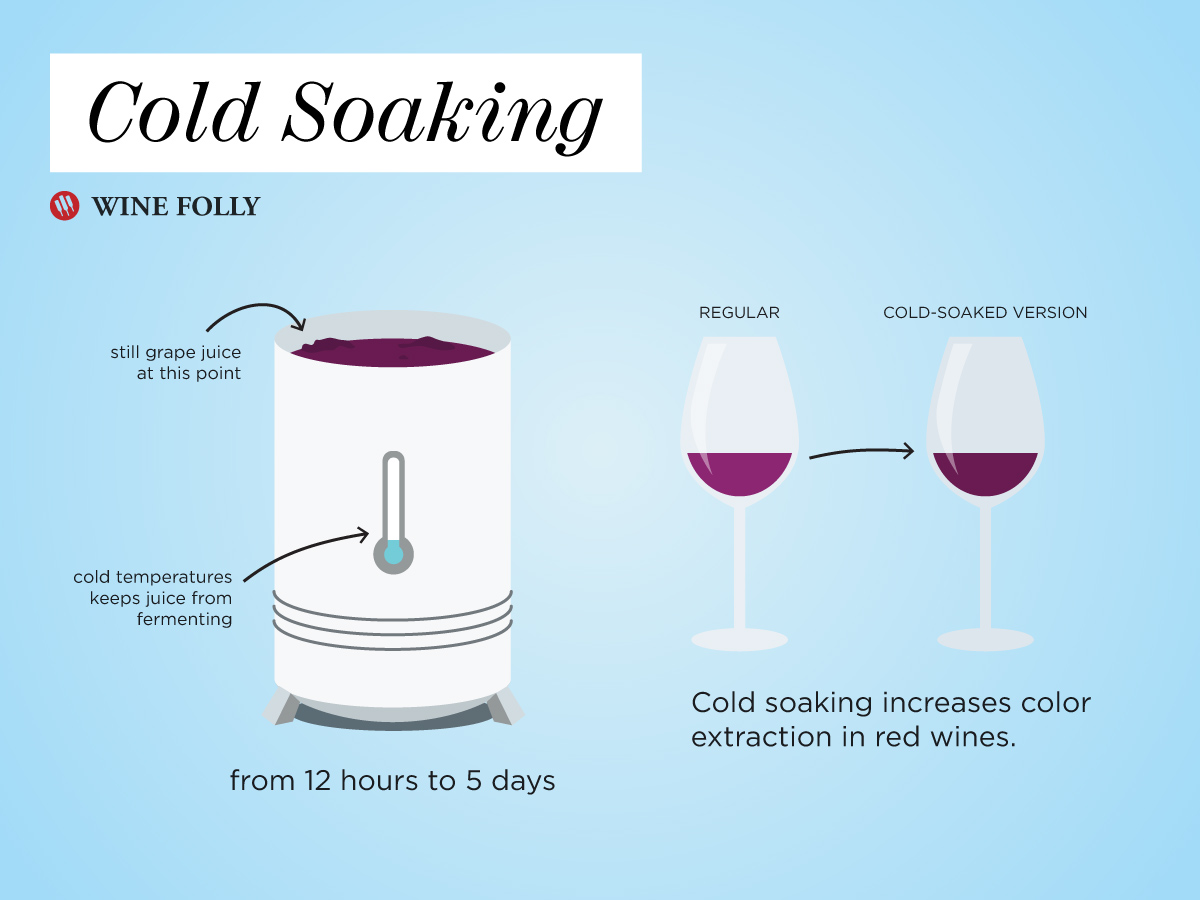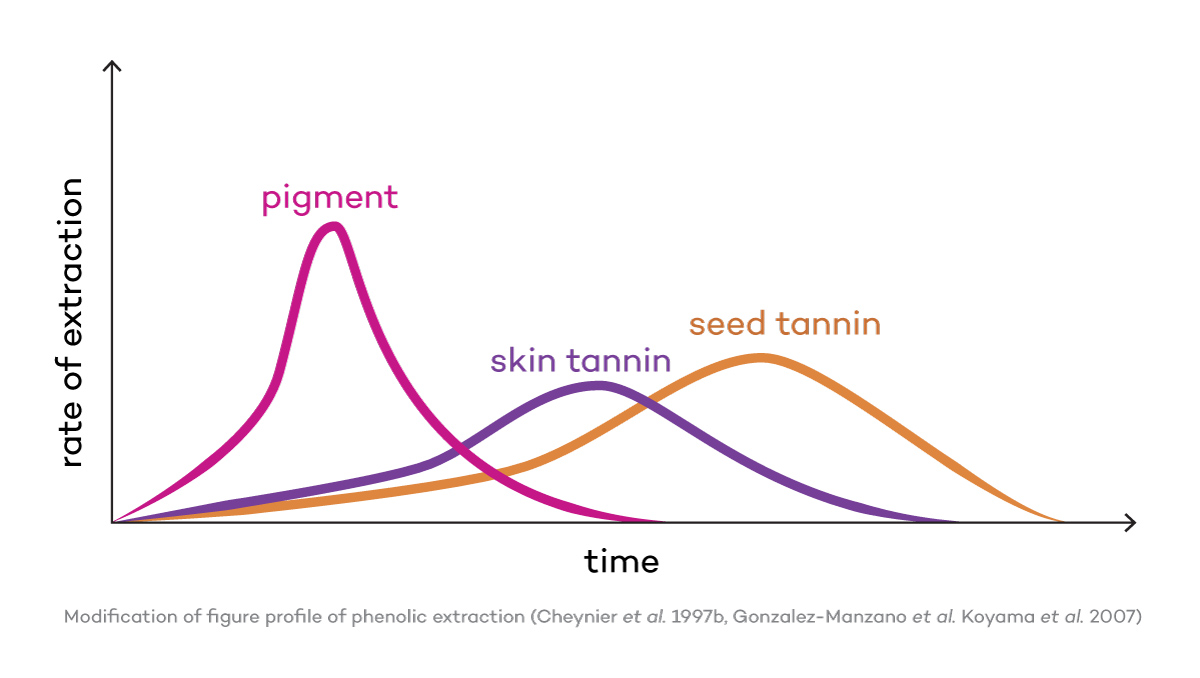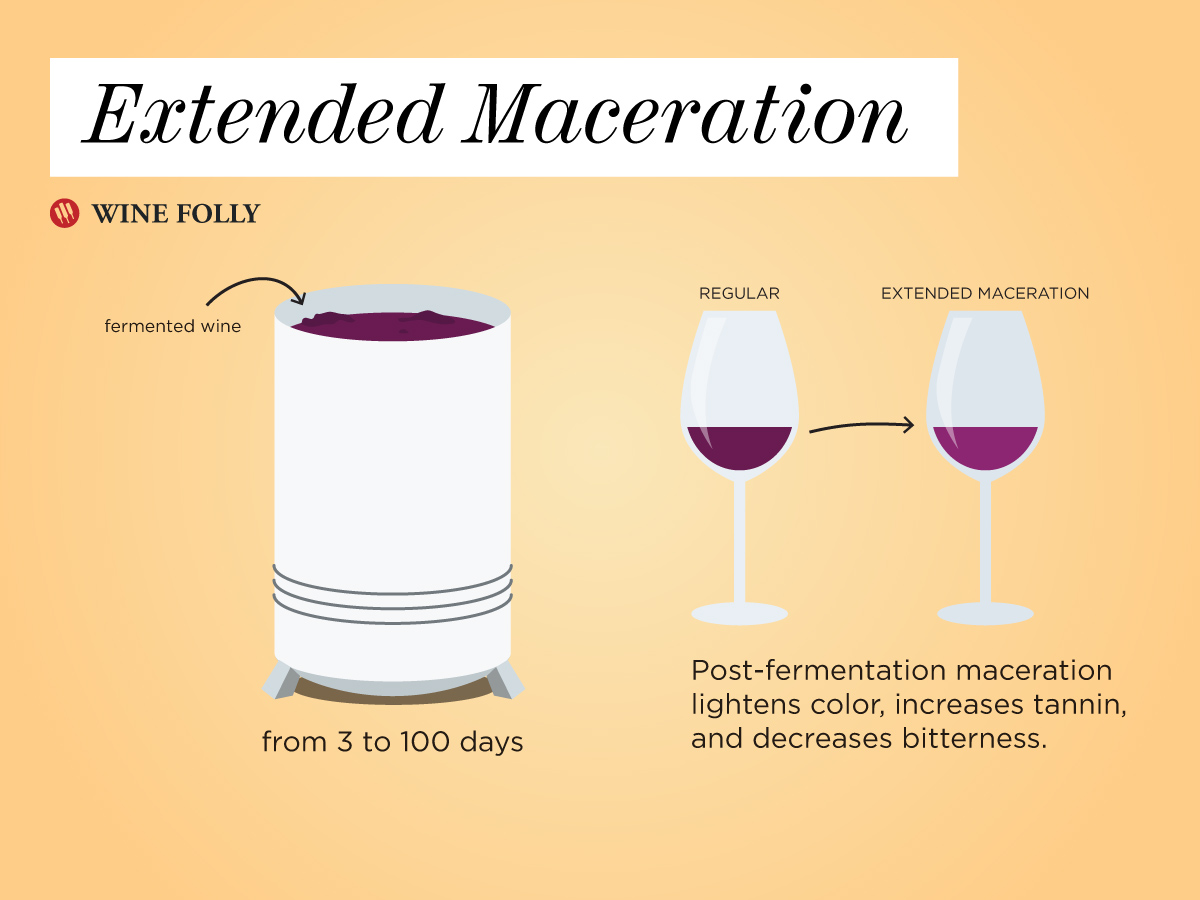Winemakers are full of secrets. They collect little tricks of the trade that help them concoct exceptional wines the same way chef’s safeguard secret ingredients and clever techniques, but sooner or later…word gets out and everyone catches on. Extended maceration is a red wine technique that has been around for some time, but it’s a winemaking trend that you’re likely to hear more about in coming years. It’s a winemaking process that is known to add incredible depth to red wines and it’s becoming increasingly popular around the world.
Find out how extended maceration affects red wines ranging from lush Pinot Noir and Syrah to assertive Nebbiolo and Cabernet Sauvignon.
What exactly is extended maceration?
Extended maceration is when seeds and skins of grapes are left in contact with juice or wine for a longer period of time. The goal of extended maceration is to increase color, flavor, and tannin structure in wine. You’re likely to see these two terms thrown around to describe this process at tasting rooms:
- Cold-soaking: When extended maceration is used on unfermented grape juice.
- Extended Maceration: When extended maceration is used after the grapes have been fermented into wine.

Cold Soaking
The process of cold-soaking greatly increases the extraction of pigment and pigment-increasing compounds. In short, it makes the wine’s color more intense. Thus, it’s a popular technique for wines made from grapes with thinner skins including Pinot Noir and Grenache (grapes with less pigment to give need more time to give it). Cold soaking happens right when the grapes are crushed the juice is stored at cold temperatures for several days. The cool storage temperatures keep the juice from fermenting while the skins and seeds macerate in the liquid.
Extended Maceration
The process of extended maceration after the fermentation is used to create richer, more supple wines with greater aging ability and less bitter tannin. The process of extended maceration increases tannin but also causes tannin polymerization, a process which increases tannin molecule size. This is considered to be a good thing because small tannin molecules are noted to be more bitter-tasting than large tannin molecules.
This type of extended maceration happens after the wines are fermented. Wines can soak on their skins and seeds for anywhere from 3 to 100 days.

Each wine grape characteristic is extracted at a different rate. Seed tannin is generally less desired due to its bitter taste even though it gives wines greater age-ability.
Winemakers Weigh In
Barolo Nebbiolo
Historically, Nebbiolo and the wines of Barolo experience long extended macerations (50+ days) in order to allow them to age for 30–40 years. Of course, the negative side effect was that the tannins from the seeds would be overwhelming and wines were nearly undrinkable upon release. To understand what Barolo producers are doing differently today, we asked the winemaker of Rivetto winery.
Enrico Rivetto’s comments have been edited for readability.
“The goal is more polyphenols, more complexity, more evolution, and more stability of the chemical components”
For the Barolos and in particular Briccolina Barolo, the wines undergo a 60-day maceration. The goal is more polyphenols, more complexity, more evolution, and more stability of the chemical components, but we loose a little bit of the color because the skins re-absorb the pigment like a sponge. What we do differently from the techniques of the past is that we take out the seeds (bitter tannins) after 10-15 days. Later, we take out the destroyed skins (which produce bad quality tannins) and the small herbaceous grape parts so the long skin contact is only with the best quality parts of the grape. It produces much smoother tannins, more stability, and more complexity but is still easy to drink early on.
Before the 70s everybody made Barolo with long skin macerations including all parts of the grape (good tannins, bad tannins, ripe tannins, and unripe tannins). Wines wouldn’t be ready to drink for 20-25 years.
Between the 80s and 2000s the trend of using French barriques, lots of enological products, and technology produced smoother, more approachable Barolo wines with more color, shorter maceration times, and higher temperature fermentations but they were less typical of the Barolo style.
Today, my technique for the future is to learn from the past and make these natural adjustments as I have explained earlier, using only the best part of the skins.Enrico Rivetto, Wine Maker, Azienda Agricola Rivetto, Piedmont, Italy
Oregon Pinot Noir
Alex Fullerton, the winemaker at Fullerton Wines, sent us a bottle of Pinot Noir from Oregon that had undergone post-fermentation extended maceration for 100 days! Here’s what Alex had to say about the process:
“We will be doing even more of it in the future as we love the results!”
The EM (extended maceration) wines are often softer and plusher than wines that haven’t gone through EM. When you conduct EM you taste the wine on a daily basis and really get to know it. You watch as it extracts more tannin over the next few days and maybe even loses some fruit components, and you think to yourself, “why did I do this!?” At about 2 weeks into the EM you start to notice a major shift as the wine turns a corner and softens up… the end result is a round, smooth, plush, polished, and complete tannin profile with a smoother mouthfeel.
Alex Fullerton, Wine Maker, Fullerton Wines, Oregon
